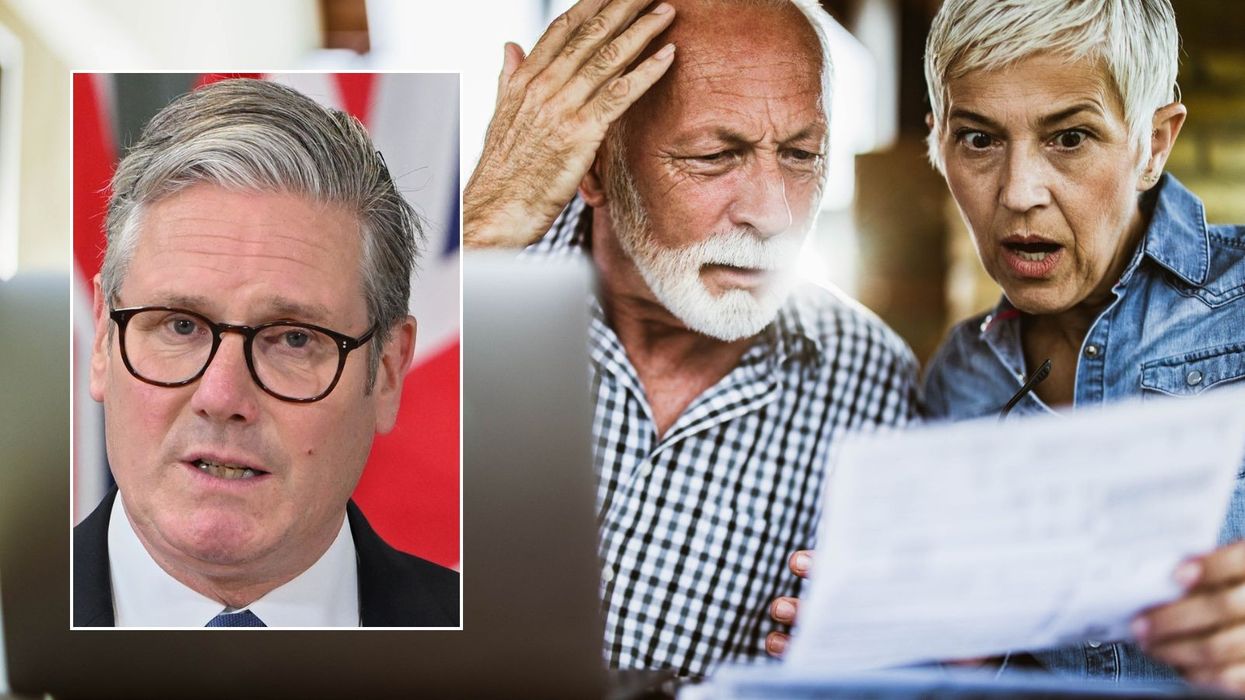House prices fell by 2.3% in November, marking the biggest monthly drop since the beginning of the financial crash in 2008, according to an index.
Yui Mok
The annual rate of house price growth slowed to 4.7%, from 8.2% in October, Halifax said.
Don't Miss
Most Read
House prices fell by 2.3% in November, marking the biggest monthly drop since the beginning of the financial crash in 2008, according to an index.
The fall is the third in a row and means since October the average house price has fallen by over £7,000.
In October the average house price was £292,406, last month it was £285,579.
The annual rate of house price growth slowed to 4.7%, from 8.2% in October, Halifax said.
Wales and the South West of England have recorded particularly sharp slowdowns in annual house price growth.
Wales and the South West of England have recorded particularly sharp slowdowns in annual house price growth.
Yui Mok
Both have been key hotspots of house price inflation during the coronavirus pandemic, suggesting that previous drivers of the market such as the “race for space” and heightened demand for rural living are now receding, Halifax said.
The pace of annual property price inflation also slowed in London, which continues to lag the other UK regions and nations.
Speaking to the Guardian, Mark Harris, the chief executive of SPF Private Clients said: “Annual house price growth continues to slow, as activity softens and the market gradually returns to something closer to what we were used to pre-pandemic.
“Mortgage rates continue to float gently downwards but the psychological 5% barrier has been broken for both two- and five-year fixes.
“With the next inflation data due next week and the MPC [the Bank of England’s monetary policy committee] expected to announce another half-point increase in base rate, along with the usual festive slowdown, further softening is inevitable.”
Kim Kinnaird, director of Halifax Mortgages, said: “The monthly drop of 2.3% is the largest seen since October 2008 and the third consecutive fall.
“While a market slowdown was expected given the known economic headwinds – and following such extensive house price inflation over the last few years (19% growth since March 2020) – this month’s fall reflects the worst of the market volatility over recent months.
“Some potential home moves have been paused as homebuyers feel increased pressure on affordability and industry data continues to suggest that many buyers and sellers are taking stock while the market continues to stabilise.
“When thinking about the future for house prices, it is important to remember the context of the last few years, when we witnessed some of the biggest house price increases the market has ever seen.
“Property prices are up more than £12,000 compared with this time last year, and well above pre-pandemic levels (a £46,403 increase compared with March 2020).
“The market may now be going through a process of normalisation. While some important factors like the limited supply of properties for sale will remain, the trajectory of mortgage rates, the robustness of household finances in the face of the rising cost of living, and how the economy – and more specifically the labour market – performs will be key in determining house prices changes in 2023.”
The average property price in London remains well above the UK average.
Victoria Jones
The average property price in London remains well above the UK average.
Here are average house prices and the annual increase, according to Halifax:
– East Midlands, £244,429, 9.5%
– Eastern England, £339,683, 7.3%
– London, £549,160, 5.2%
– North East, £173,587, 10.5%
– North West, £229,218, 9.4%
– Northern Ireland, £185,097, 9.1%
– Scotland, £203,132, 6.5%
– South East, £397,562, 7.6%
– South West, £307,750, 8.4%
– Wales, £220,689, 7.9%
– West Midlands, £253,253, 9.4%
– Yorkshire and the Humber, £207,800, 9.3%







































